
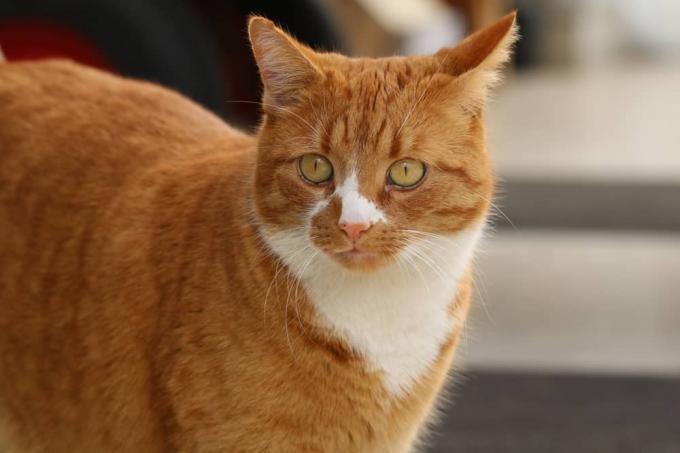
Table of contents
- "Cats and Poison" fact sheet
- Plants poisonous to cats A-K
- Poisonous plants M-Z
- The cat-dangerous household
- New Poison = New Danger for Cats?
- Toxic threats to outdoor cats
- Invasive neophytes
- Aggressive Citizens
"Cats naturally know what is good for them and what is not" - but many a velvet paw has forgotten that, which is why cat owners should know which plants are poisonous to cats. Below you will learn about the houseplants that are really dangerous for cats and a few other household toxins. You will also learn why some poisons are not poisons at all and what even experienced outdoor cats should beware of.
"Cats and Poison" fact sheet
Cats initially react to the same toxins as all mammals. That is why many of the same named poisonous plants also appear in lists of poisonous plants for humans, dogs and cattle. Here, however, it should be noted that a 4 kg cat reacts much more sensitively than a 30 kg dog or 75 kg human.
Furthermore, there are species-specific sensitivities in every mammal. Currently a field of ongoing discoveries and new differentiations. For cat owners, newly published articles on "Cats and Poison" are therefore required reading.
However, new venoms (on "internet cat sites") should be viewed with caution. Maybe it's neither new nor dangerous for cats, just "reader's poison" (= information not/poorly/incorrectly researched).
Plants poisonous to cats A-K
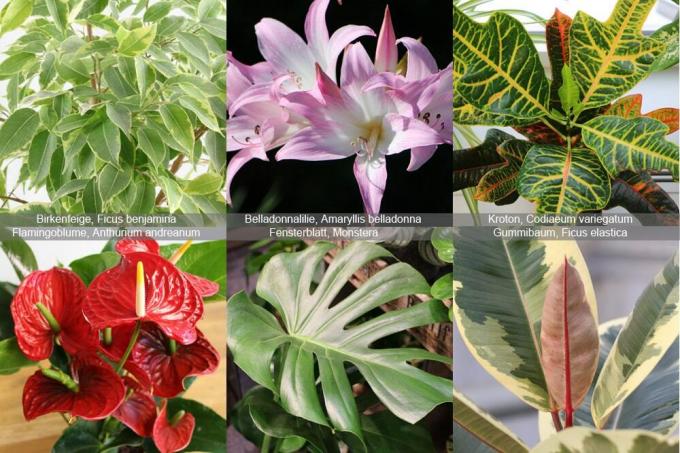
There are so many poisonous plants that, in an emergency, it would be impossible to look through the list quickly enough. Therefore, only plants are listed below that your cat really shouldn't nibble on:
- Aloe, Aloe spec., moderately poisonous
- Cyclamen, Cyclamen persicum, moderately poisonous
- Amaryllis, Hippeastrum spec., moderately poisonous
- Aralia, Aralia spec., moderately poisonous
- Aronchalice, Zantedeschia aethiopica, moderately poisonous
- Avocado, Persea gratissima, toxic, gastrointestinal symptoms + pancreatitis
- Azalea, see rhododendron, highly poisonous
- Belladonna lily, Amaryllis belladonna, highly poisonous
- Weeping fig, Ficus benjamina, medium poisonous
- Bow hemp, Sansevieria trifascata, medium poisonous
- Brunfelsia, Manaka, Brunfelsia sp. moderately toxic
- Colorful root, Caladium bicolor, moderately poisonous
- Dieffenbachia, Dieffenbachia senguine, highly poisonous
- Dragon tree, Dracaena drago, medium poisonous
- Ivy, Scindapsus spec., moderately poisonous
- Single leaf, Spathiphyllum floribundum, medium poisonous
- Monstera spec., moderately poisonous
- Ficus, Ficus spec., moderately poisonous
- Flamingo flower, Anthurium spec., moderately poisonous
- Flaming Katy, Kalanchoe spec., moderately poisonous
- Rubber tree, Ficus elastica, moderately poisonous
- Heavenly Blossom, Duranta erecta highly poisonous
- Cacao tree, Theobroma cacao, highly poisonous
- Caladium, Caladium bicolor, medium poisonous
- Kalanchoe, Kalanchoe spec., moderately poisonous
- Camellia, Camelia sp., leaves of the tea bush contain caffeine, which is toxic in quantities
- Klivia, Klivia miniata, moderately poisonous
- Common thread, Aglaonema commutatum, moderately poisonous
- Coral tree, Solanum pseudocapsicum, moderately poisonous
- Croton, Codiaeum variegatum, highly poisonous
Poisonous plants M-Z
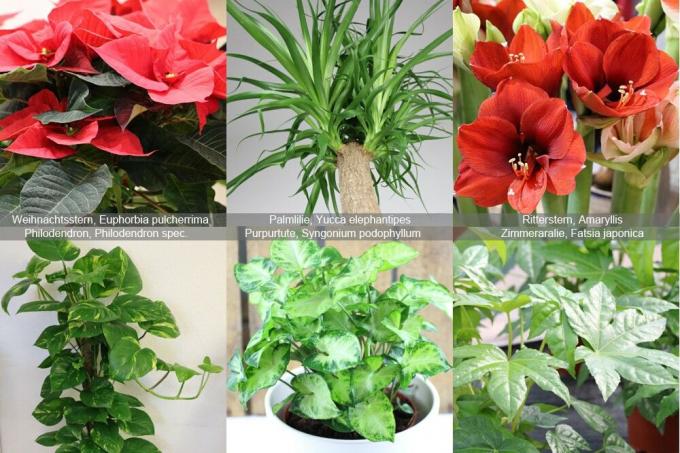
- Macadamia, Macadamia integrifolia, toxic, mechanisms of action unknown, muscle tremors, lameness, joint stiffness, high fever
- Cycad, Cycas spec., moderately poisonous
- Yucca, Yucca elephantipes, medium poisonous
- Philodendron, Philodendron spec., medium poisonous
- Magnificent lily, Gloriosa superba, highly poisonous
- Purpurtute, Syngonium podophyllum, moderately poisonous
- Strap leaf, Clivia miniata, moderately poisonous
- Knight's Star, Hippeastrum spec., moderately poisonous
- Crown of Glory, Gloriosa rothschildiana, highly poisonous
- Schellenbaum, Thevetia peruviana highly poisonous
- Slate leaf, Begonia spec., moderately poisonous
- Pigeon berry, Duranta erecta highly poisonous
- Tropical oleander, Thevetia peruviana, highly poisonous
- Poinsettia, Euphorbia pulcherrima, highly poisonous, the existing non-poisonous varieties cannot be distinguished from the toxic ones.
- Miracle shrub, Codiaeum variegatum, highly poisonous
- Desert rose, Adenium obesum, highly poisonous
- Yucca, Yucca elephantipes, medium poisonous
- Ornamental paprika, Capsicum annuum, whole plant highly poisonous, fruits contain only a few alkaloids
- Room aralie, Fatsia japonica, moderately poisonous
- Room calla, Zantedeschia aethiopica, moderately poisonous
Tip:
Not only substances that cats inadvertently ingest can be dangerous to the animals. But also substances that people apply to their fur/skin to ward off parasites (in too high a dose). Two cats died from an infusion containing pyrethroids that their owner massaged into their fur with good intentions to keep vermin out. The pyrethroids / pyrethrins sold to ward off external parasites (and others for the same purpose serving poisons) can also be given to the cats as a collar, shampoo, spot-on preparation, dip and ear clip come".
The cat-dangerous household

“Most accidents happen at home”; probably most cases of poisoning too, because not only indoor plants can be dangerous for cats, but also a whole lot of everyday substances in the household:
- Avocados: toxic, gastrointestinal symptoms + pancreatitis
- Yeast dough / sourdough raw: alcohol intoxication
- Cocoa, chocolate: highly toxic
- Garlic: Toxic in quantities
- Macadamia nuts: toxic, mechanisms of action unknown, muscle tremors, lameness, joint stiffness, high fever
- Milk: As in humans, rearing food that induces vomiting and diarrhea in many adult individuals
- Raisins: highly toxic, kidney failure possible from 2.6 g raisins per kg body weight, reason unknown
- Tobacco: highly toxic, 5-25g of tobacco or a cigarette butt can kill a cat
- Tea tree oil: incompatible, the cat's body can hardly break down the phenols and terpinenes it contains
- Grapes: highly toxic, kidney failure possible from 10 g grapes per kg body weight, reason unknown
- Xylitol (sweetener): Harms by increasing insulin release, resulting in a life-threatening drop in blood sugar levels
- Onion: poisonous, also cooked in large quantities
New Poison = New Danger for Cats?
If you are educating yourself all round about toxins that could harm your cats, you will momentarily hardly get past the "poisonous walnuts", which then often go straight to the "poisonous Roquefort" transfer. The newly discovered, dangerous mold toxin "Roquefortin", which is currently doing the rounds on "cat pages" on the Internet, is to blame. This "new dangerous poison" is neither new nor dangerous: the first publications on Roquefortin C are almost 30 years old when the fungal toxin was first isolated from a Penicillium roqueforti strain. Penicillium roqueforti is the mold that has existed since 1060 (Roquefort), November 11th. Century (Gorgonzola), 1730 (Blue Stilton), early 20th. Century (Danish Blue) ensures that these cheeses contain the typical blue veins, without people or cats bless the die after eating these cheeses, typically in large quantities.
The walnut itself is not shown as poisonous on the cat pages, the nut shell is said to be frequently attacked by Penicillium roqueforti fungi that produce roquefortin, according to Katzenseiten with bad consequences: "... Roquefortin is toxic in vertebrates, neurotoxin, leads to convulsions... in the worst case to death", to Roquefortin in Roquefort cheese "Without being able to provide information on the amounts of toxins contained", it is advised "to make sure that the cat never eats Roquefort cheese" (deliberately analogously and not with The exact text is quoted because it's not about badmouthing the websites of dedicated cat lovers, but about poison information for cat lovers who don't have unnecessary fears generate).
After reading these pages, the cheese-loving Roquefort friend with a cat must be so unsettled that he considering serving the next cheese platter for the party buffet without any blue cheese or the cats during the party to move out. What a pity it would be for the guests or for the cats... the whole walnut and cheese poison incantation calls for a few facts with which the toxicity of walnuts, cheese and co. can be better classified leaves.
These facts can be found on the Internet: In 2001, a group of US scientists dealt with Roquefortin C in cheese, loosely translated: “Roquefortin C content in cheese between 0.05 to 1.47 mg/kg … low levels and low toxicity of Roquefortin C make consumption of blue cheese safe for consumers” (www.ncbi.nlm.nih.gov/pubmed/11271775). A TU Munich dissertation from 2005 on the "Influence of Roquefortin C on animal health ..." lists all Roquefortin C researched to date Toxicity data: In 4 studies, laboratory mice received up to 189 mg roquefortin C per kg body weight without any neurological changes one study killed (perhaps not so fit) laboratory mice with "only" 100 mg per kg body weight (mediatum.ub.tum.de/doc/603663/603663.pdf).
Of course, any cautious scientist/cat lover will look to the fatal outcome study when it comes to amounts cats can safely consume. This can be calculated: if your cat completely eats a commercially available 100 g pack of Roquefort, it will ingest 0.005 to 0.147 mg of Roquefortin C. It becomes dangerous for a normal 4 kg cat from 400 mg Roquefortin C, so the cat would have to eat 272 kg Roquefort (and similar amounts Walnut shells (in the nuts themselves there should be much less Roquefortin C) to get Roquefortin C poisoning die. According to this calculation, even cautious scientists/cat lovers can assume that Roquefortin C cannot kill cats because they had previously eaten too much blue cheese would burst... and dedicated cat lovers are asked, for the good of all, not to "invent new poisons" but to either research or just the substance in question to omit.
Tip:
Cats become victims of poisoning, but statistically very rarely. More often cats suffer from the consequences of a diet consisting only of ready-to-eat food. What is sold in (expensive) mini containers with parsley on the lid belongs to the opinion many critics into a completely different container (without parsley on the lid, also dustbin called). It is less about parts of meat that are only processed in pet food such as innards, heads, legs; people with access to healthy meat should share these with their cat more often because they contain more/different ingredients than the muscle meat that is otherwise eaten. It's about the fact that meat products from conventional factory farming can contain everything that is also known as "cat meat". Sensitive people are increasingly discouraged from enjoying (cheap) meat, but in the cat by an organism that is around 20 times smaller be metabolized. If you find out about healthy cat nutrition without ready-made food, you can also feed your cats much more cheaply.
Toxic threats to outdoor cats
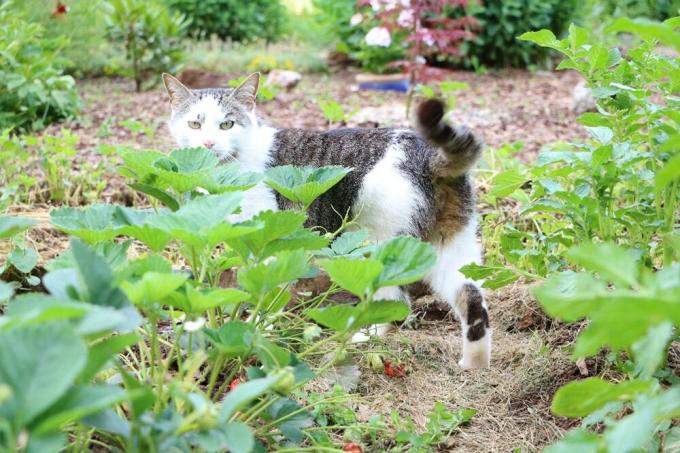
Do you have an outdoor cat at home who could get poisoned anywhere outside? Theoretically safe, in practice real outdoor cats who do well outside don't necessarily put everything in their mouths that comes their way. Especially not when we go out, where it's really about more exciting things. If you would like to get a brief overview of which plants cats can theoretically poison themselves with, you can find them here See articles on plants poisonous to dogs and horses for long lists (all mammals fall after ingesting most toxins Incl. dead to humans together, only the amounts differ).
However, there are two scenarios in today's environment that require special attention and may harm even the smartest cats:
Invasive neophytes
Even a seasoned outdoor cat who can easily deal with every cat rowdy in the area doesn't have one scientific training in botany, which put him in contact with plants from foreign countries prepared.
Or to avoid contact with plants from foreign countries, because any skin contact with the pretty white umbels (Hercules perennials) can in bad, burn-like, poorly healing wounds end up. Botany lessons for cats won't do much, but it makes sense to ask your community why the dangerous stuff hasn't been razed to the ground yet. This also applies to Hercules perennials on private property: property obliges, for example, the planting in his To keep the garden in a condition that those walking, jumping, creeping (driving, flying, etc.) past or over it cannot harms.
You can also ask the municipality whether other invasive neophytes that can (also) be dangerous to cats are under special surveillance in your area.
Aggressive Citizens
If you let your cats run around outside without a bell collar in the spring, it should be over a leisurely example recognizable by its curves, which no one chases a few meters fast trusts. Otherwise, in our increasingly intolerant society, there is always the danger that an overzealous bird protector will want to protect the birds by killing cats.
If an overzealous bird protector is encouraged to (mis)deed by hunting cats, poisoned baits are also often used. Which then first succumb to the plump, leisurely (gluttonous) cats that can just about catch a snail. In addition, all cat owners in the area have something to do, with cats being occupied instead of going outside, looking for poisoned baits, etc. Always pay attention to the cat owner talks, messages, forums in your area, if bait is being laid somewhere, word usually gets around very quickly.
Tip:
You don't think this intervention in evolution is so great, after all, cats hunt birds? Yes, of course, the birds would be able to handle that without any problems (catch rates for domestic cats are statistical cat-shamingly low) if they hadn't gotten into trouble because of the "few thousand" human interventions... here: www.youtube.com/watch? v=mLByIqmvvtk explains why our songbirds are going extinct and what you can do about it, although house cats aren't the problem. In any case, the songbirds say thank you for every bell collar.
 garden editorial
garden editorial I write about everything that interests me in my garden.
Learn more about beneficial insects

What does hedgehog droppings look like? | Recognize hedgehog droppings
Hedgehogs are not only very cute, but also useful animals. a. devour the unpopular slugs in the garden. They feel particularly comfortable in natural gardens. Their legacies, which can even be hazardous to health, are less pleasant.

What does raccoon droppings look like? How to recognize him
Raccoons are purely outwardly, quite cute contemporaries. However, this does not hide the fact that these are wild animals that can cause great damage in the garden and on the house. This masked intruder can pose a danger to residents and pets.
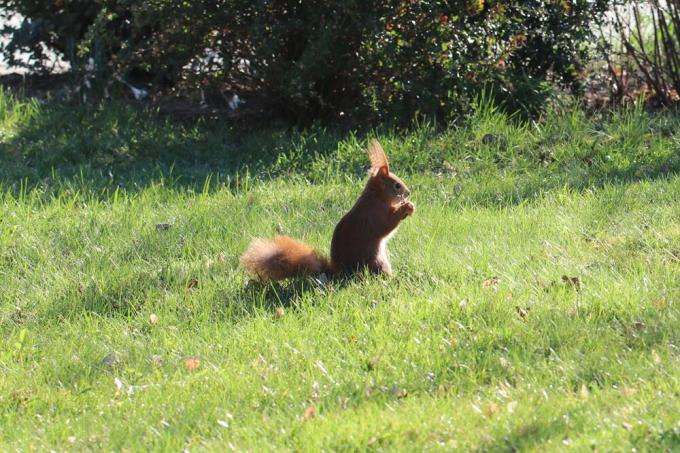
Recognizing squirrel droppings: typical appearance with picture
Gardens provide an oasis for many wild animals to forage there. The animal visitors leave clearly visible traces in the form of droppings. If you take a closer look at the pieces of excrement, you can see which animal was the cause based on certain clues.

Recognizing fox droppings: 5 characteristics with a picture of the fox droppings
If animal droppings are found in the garden, it is annoying in any case. However, there can also be a danger with fox droppings in particular. But how can fox droppings be recognized and what should be considered when removing it?

drive away wild bees | What to do against wild bees in the garden?
If you want to drive away and get rid of wild bees, you should use natural and gentle means. Because the insects are useful in the garden and generally important for the environment. In addition, they are rarely threatening. We reveal how the fight works.

List: these ant species exist in Germany - ants
Ants can be found everywhere, whether in the forest, on a roadside, in the garden or even on the terrace and in the house if there is something interesting for the animals. But not all ants are the same, there are over 13,000 species of ants worldwide, 200 of them in Europe alone.
